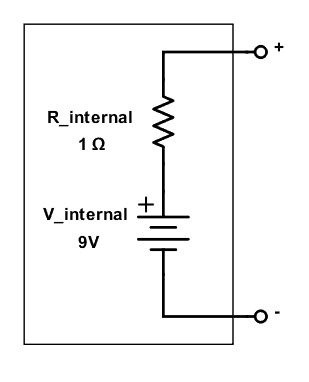Today I got a question from Garry on the Ohmify community.
[GARRY]:
“When I measure the voltage of my 9V battery using my multimeter I get a reading of 9.06 when it is not connected to any circuit. When I hook the battery up to a simple circuit (i.e. 325 Ohm resistor in series with a red LED) and measure the voltage drop across the battery I get a reading of 8.65 V – why the difference?”
[OYVIND]:
Great observation! That’s the difference between an ideal battery that we often use to make calculations in a circuit and a real battery.
The reason for this is that a real battery has an internal resistance. The size of the internal resistance depends on the battery type.

So the voltage you can squeeze out of a battery actually depends on what you connect to it!
In the image above, the battery has an internal resistance of 1 ohm. If you connect that to something of 500 ohms, you can figure out the battery voltage by using the voltage divider formula:
V = 9V * 500 ohm / (1 ohm + 500 ohm) = 8.98 V
If you connect it to something of 50 ohms, you get:
V = 9V * 50 ohm / (1 ohm + 50 ohm) = 8.82V
So there you have it! Because of the internal resistance of the battery, the voltage from the battery will change depending on the load you connect to it.
If you want to learn electronics, check out the electronics academy Ohmify. One of the main benefits is the community forum – where you’ll be able to ask all these questions that come up when you experiment with circuits.
Learn more about Ohmify here:
https://ohmify.com/join/
Keep On Soldering!
Oyvind @ build-electronic-circuits.com
Copyright Build Electronic Circuits
No comments:
Post a Comment